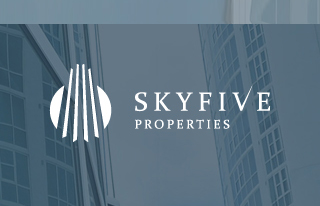Categories
Choose Language





Popular Posts
[mashshare url="http://www.skyfiveproperties.com/blog/4-methods-fall-protection-can-install-safety"]4 Methods of Fall Protection You Can Install for Safety
One of the most common injuries in a construction site is falling. Not only is it hazardous, but it is also one of the most fatal injuries that can happen to a person working in a construction site. To prevent this, OSHA made rules and regulations that require employers to utilize methods to prevent accidents that can occur from falling.
One of the safety methods that can be utilized by construction companies is fall arrest systems. Fall arrest is a method that stops a person from falling from a great height. Of course, there are other forms of fall protection such as fall guarding, which prevents a person from accessing a fall prone area, and fall restraint that prevents a person from falling.
In the construction industry, an employer needs to prevent injuries from falling. The best way to do this is to keep a safe environment for the workers and teach them about the importance of fall arrest systems. To start with, let’s talk about what fall protection is precisely, and how does it work?
What is fall protection, and how does it work?
There are three primary forms of fall protection: fall arrest, fall guarding, and fall restraint. As mentioned earlier, fall arrest for stopping a person from falling, fall guarding is for stopping a person from going to a fall prone site, and fall restraint is preventing a person from falling like metal roof guard rails. Fall restraint is important fall protection as it prevents fall hazards from happening in the first place.
Prevention is better than cure, after all. Also, it is one of the most commonly used equipment in the construction industry. This is because there are a lot of metal roof guardrails for sale on the internet so it’s easy to find one.
Fall protection systems are necessary if the worker is required to work from an elevated position that has the risk of causing injury by falling. If the worker is working beyond 6 feet or more above the ground, fall protection systems should be implemented.
There are four methods of fall arrest, according to OSHA. Each of these methods has a set of standard practices. Here is the basic rundown of each method:
Fall Arrest
The most crucial method of fall protection is the fall arrest method. Fall arrest should be used in conjunction with other methods to ensure the safety of all workers who are exposed to a fall hazard in their work, which is defined by OSHA as a drop of 6 feet or more from a walking distance down to the lower levels.
There are three standard equipment for fall arrest.
Full safety body harness. The full-body safety harness is the worker’s first line of defense against fall hazards. However, the kind of harness a worker should be wearing must be based on what kind of job he is doing. But the overall gist of a harness is that it should be capable of carrying a combined weight of 310 lbs and additional weight for the worker’s tools.
Also, it should be used along with other fall protection equipment such as an anchorage device and a deceleration device. The anchorage and deceleration device will help the worker have a reduced impact should a fall occur.
Lanyard. Lanyard is the thing that connects your harness to an anchor safety. These lanyards can range from a 50` SRL to a 2` SRL. There are different kinds of lanyards for specific jobs, so additional research is required.
Anchor Points. Anchor point is the final piece for fall arrest systems. Anchor points will hold you in place while working. According to OSHA, anchor points should be able to withstand 5000 lbs or double the anticipated weight that the anchor point will hold.
Also, OHSA requires all employers to have a qualified engineer to assemble and check their anchor points system. Always remember that the lanyard and harness will only be able to do their jobs if the thing that is holding them doesn’t break.
Positioning
A positioning system lets a worker do his job with his hands-free from holding on to dear life. This means that the positioning system lets the worker work with both of his hands. This system should be used in conjunction with fall arrest systems to ensure that the worker that is exposed to a fall hazard is safe while working.
A positioning system will automatically activate every time a worker leans back. However, this system does not provide fall arrest and must be used alongside a fall arrest system. Also, the most common application of a positioning system is when a worker is working on a ladder.
Suspension
Suspension systems are one of the most common types of fall protection and are usually utilized by window cleaners. Suspension equipment is used to lower the worker while his hands are still able to work freely. However, just like positioning systems, suspension systems don’t provide fall arrest systems and do not utilize lanyards and harnesses.
Retrieval
The retrieval system is the one step of safety you should do when the most dreaded happens, which is when a worker falls. Sometimes known as the rescue plan, retrieval systems covered the situation when the fall had happened, and the worker should be retrieved to be brought to the hospital.
This plan should feature specific actions that should be taken to retrieve the fallen person for him to be brought to a medical facility. Despite the system being an essential aspect of providing safety for personnel and the only step that is taken post-fall, OSHA has not set specific standards under retrieval systems.
Not only that, but they also don’t have specific instructions when a worker is hurt due to a fall hazard. Because of that, employers are free to decide on what they should do when such a thing occurs and should formulate a plan of action for their retrieval systems.
Takeaway
These methods are useful for implementing and ensuring the safety of your personnel. However, particular types of fall hazards are outside the scope of the mentioned methods. Thus, it is essential to do a little bit of research to cover all fall hazards for your employees to be safe. Technology is continuously evolving, and so are methods of ensuring your personnel’s safety.
Author’s bio:
Richard Perkins has been actively writing blogs for the construction and engineering industry for more than five years. On top of that, he is currently enhancing his drawing skills and pursuing his interest in architecture. When he’s not busy, Richard likes to play basketball.
[mashshare]
Popular Posts:

Kaya Wittenburg
Kaya Wittenburg is the Founder and CEO of Sky Five Properties. Since the age of 10, real estate has been deeply ingrained into his thoughts. With world-class negotiation and deal-making skills, he brings a highly impactful presence into every transaction that he touches.
He is here to help you use real estate as a vehicle to develop your own personal empire and feel deeply satisfied along the way. If you have an interest in buying, selling or renting property in South Florida, contact Kaya today.










